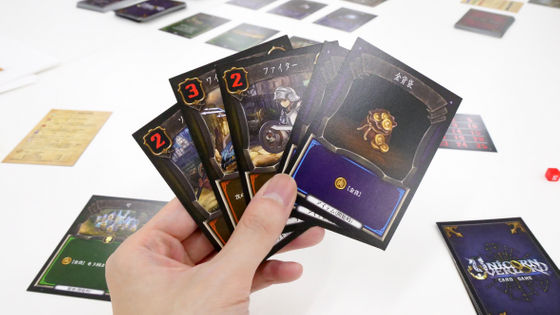Play review of the board game 'Wingspan' that creates a 'bird's paradise' by inviting beautiful wild birds

' Wingspan ' is a board game that creates a bird's paradise consisting of 170 kinds of birds by making full use of beautiful artwork, bait box type dice tower, special dice and other elaborate items. In 2019, it was a remarkable work that won the grand prize in the expert category of the annual game grand prize in Germany, which is a board game powerhouse, so I actually played the Japanese version in the editorial department.
Wingspan Full Japanese Version | ArclightGames Official
The wing span is a package that is so large and heavy that it is difficult to lift it with one hand. A large flapping Enbitai orchid butterfly is drawn.
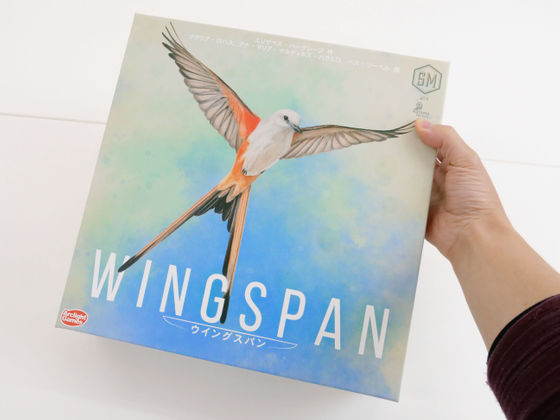
The number of players is 1 to 5, the target age is 10 years old and over, and the estimated play time is 40 to 70 minutes.

The package contains bird cards, bonus cards, card trays, token / purpose tile sheets, personal boards, instructions, egg tokens, action pieces, and special dice.
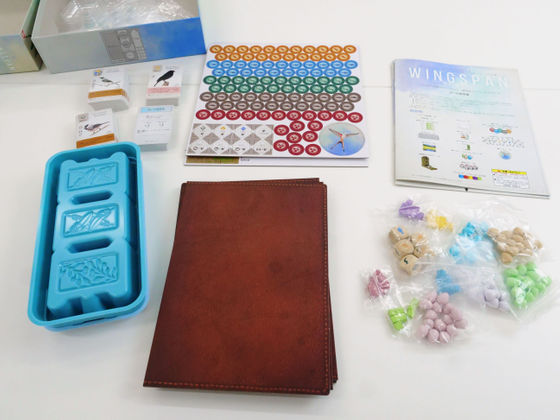
'Bird card' is literally a bird card. Players will protect these birds and turn their nature reserve into a bird's paradise.
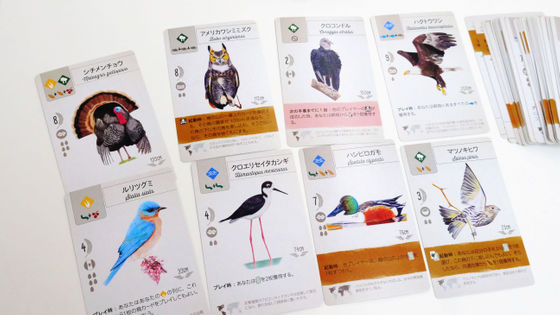
The wingspan contains 170 of the 914 species of birds found in North America. Therefore, there are quite a few bird cards.

A 'bonus card' is a card that describes each player's personal goals. Victory points can be earned by achieving the conditions written on the card.

'Purpose tile' is a common goal for all players. At each game break, each player gets victory points according to the conditions of the target tile.
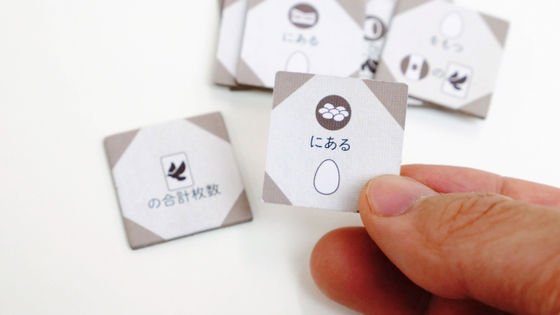
You will need an 'egg token' to bring birds to your nature reserve. There are 5 kinds of colors, but there is no difference depending on the color.

The bait of the bird card is the 'bait token'. From left to right, 'fruits,' 'fish,' 'invertebrates,' 'rodents,' and 'seed,' each bird can only eat a fixed amount of food.
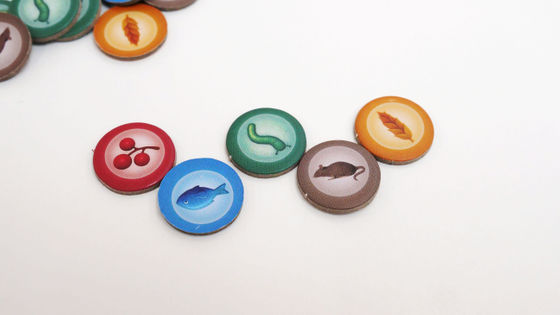
This is a prefabricated 'bait box type dice tower' where birds come to eat.

Assemble according to the instructions ...
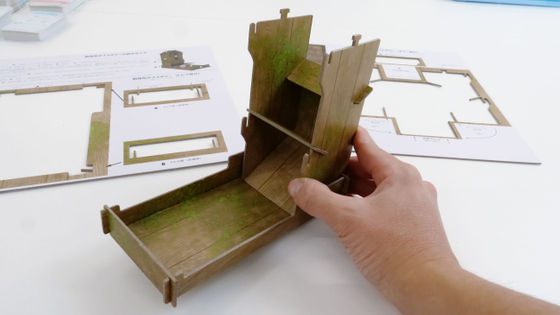
When completed, it looks like this.
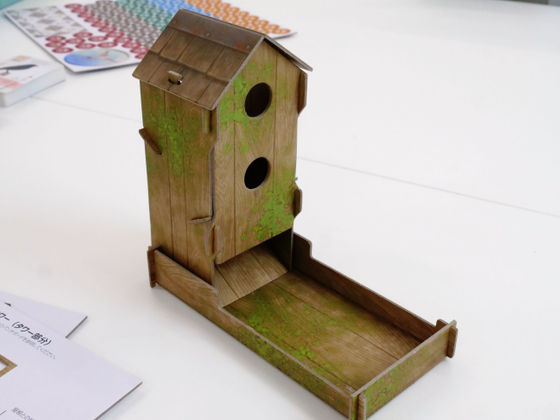
There is a hole on the back for inserting the special dice.
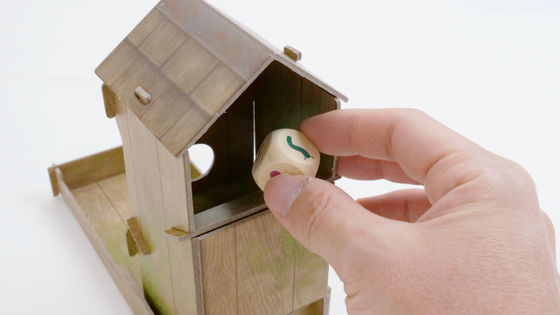
When you throw in the dice, it rolls inside and comes out in the lower row like this. Each player gets bird food from here.
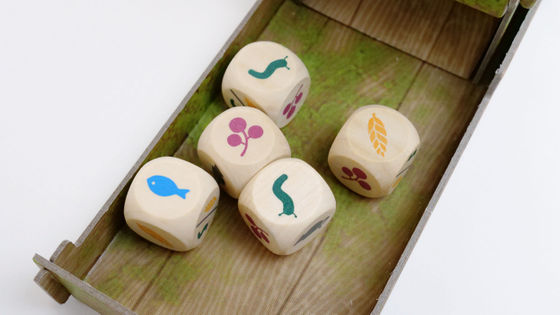
The state of actually putting it in is as follows.
Wingspan enriches its nature reserve, and the person who gets the most victory points from bird cards, bonus cards, spawned eggs, and stored food wins.
So, let's actually play it. First, place egg tokens, bird cards, bait tokens, and bait box-shaped dice towers within the reach of everyone.
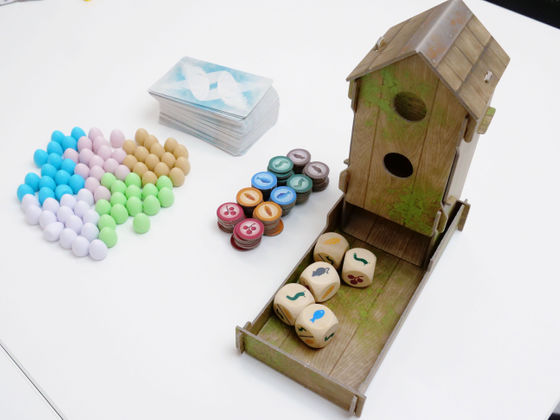
Place three bird cards face up from the deck on the card tray.

The 'purpose board' is a board that shows the victory points for each round.
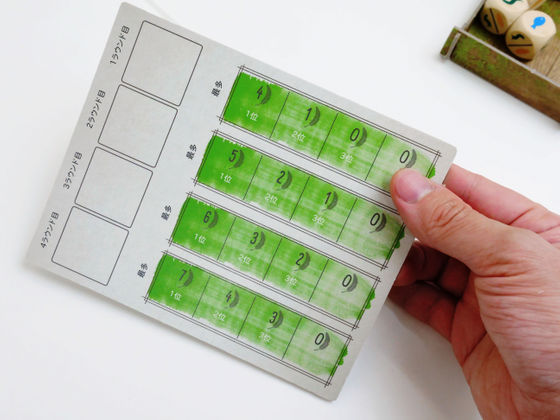
Randomly select the desired tile and set it in each round. At the end of each round, the ranking will be decided according to the number of bird cards placed and the number of egg tokens placed on the bird cards, and victory points will be obtained. In addition, the first round has eight turns, but the number of turns gradually decreases to 7, 6, and 5 turns in the second, third, and fourth rounds, respectively.
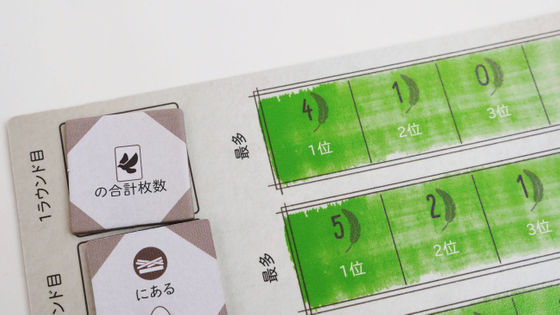
At the beginning of the game, each player will be dealt a total of 5 bonus cards, 7 action tokens, 5 bird cards, and 1 type of bait token.
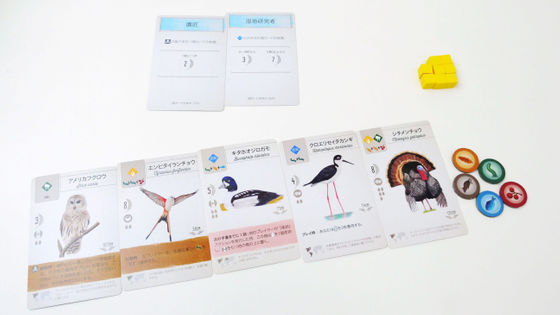
Each bird card has different abilities, but the 'ability' in the red frame in the image below is especially important. Cards labeled 'At startup' can be activated as many times as you like, as you can use their abilities each time you perform each action.
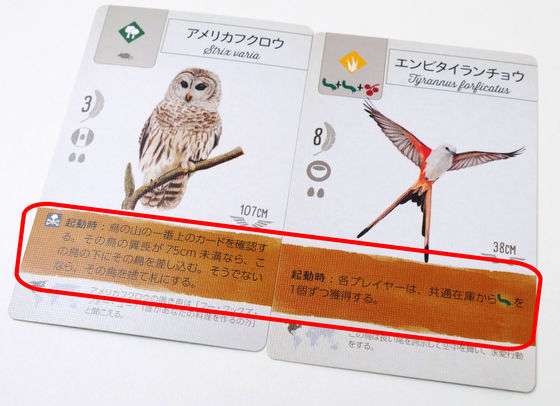
The ability labeled 'When Playing' will only be activated once when the bird is summoned to your reserve.
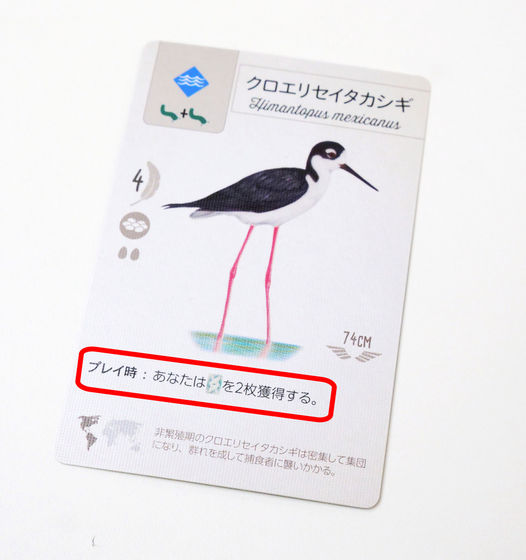
The ability 'once until the next turn' is an ability that automatically activates when another player takes a specific action. Since the wing span does not directly interfere with other players, the main effect is 'when another player gets an egg / bait token, he / she also gets it'. It's a powerful ability, but it only activates once per turn.
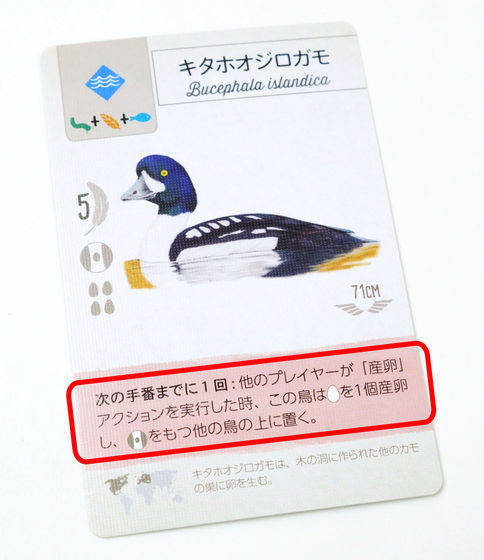
Some birds do not have the ability.
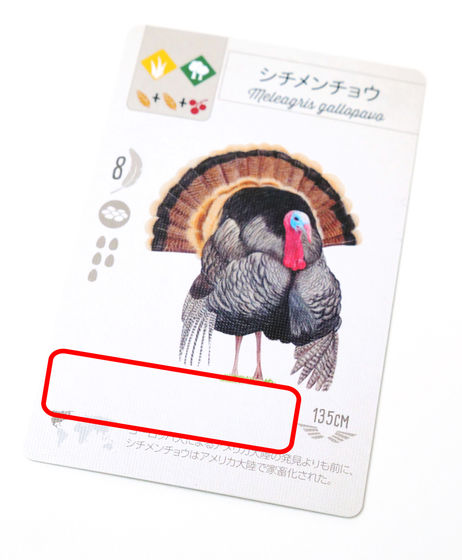
Birds without abilities have excellent basic abilities, such as the high victory points (red frame) that can be obtained by calling them to their protected area.

First of all, the player chooses as many 'bird cards to leave' as he wants from the five bird cards. According to the instruction manual, 'The ability at startup is especially effective!', So select the scissor-tailed flycatcher and
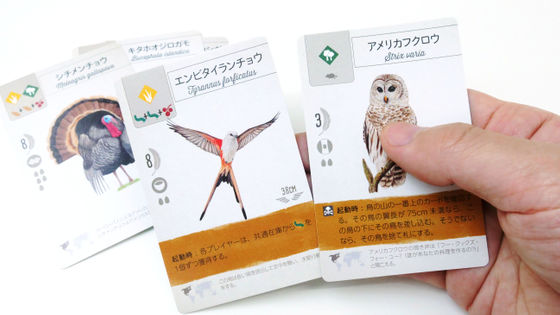
Choose the bait tokens you want to keep so that the total number of bird cards and bait tokens left in your hand is '5'. This time, we left rodents, invertebrates, and fruits.
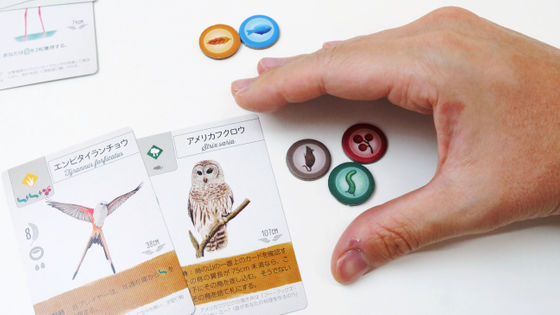
Then choose one of the two bonus cards. This time, if there are 3 to 4 'Falconer' cards that 'get 2 points for each bird card that has the ability of' predation '' and 'the number of bird cards that live only in' wetlands '' It was a 'wetland researcher' card with 3 points and 7 points for 5 or more.
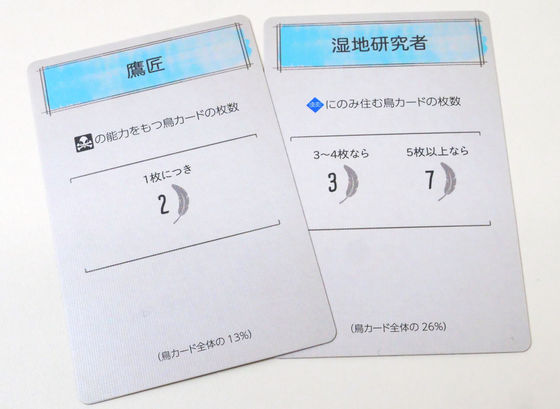
Barred Owls have the ability to 'predate', so I decided to choose 'Falconer'.

Each player will also be given a 'personal board'. The back of the personal board is designed like leather.

When you pop it open, you'll see 'your protected area.' From the top, the habitats according to the bird's ecology, such as 'forest,' 'grassland,' and 'wetland,' are drawn.
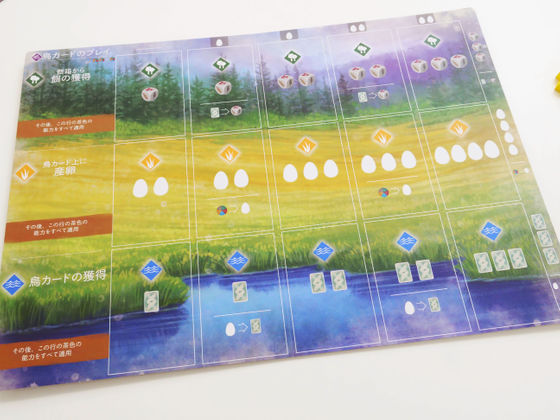
This completes the preparation. I will actually start playing. The Wingspan manual is polite and easy to understand, and the rules that make you think 'I don't understand this interpretation' are explained in detail. There is also a

Decide on a parent and turn clockwise. On your turn, you can perform four types of actions: 'Play Bird Card', 'Get Food from the Feed Box', 'Spawn on Bird Card', and 'Get Bird Card'. After performing each action once, the turn ends, so you cannot perform multiple actions in one turn.
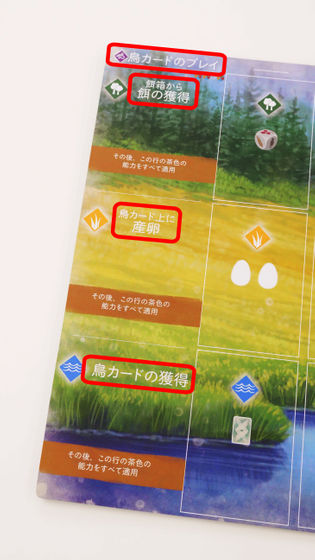
'Action token' is a piece to make it easy for other players to understand 'I will do this action' when performing an action, and each player has its own color. First, place the action token and execute 'Play Bird Card'.

'Playing a bird card' is 'putting a bird card from your hand into your reserve'. At this time, look at the habitat drawn on the upper left of the bird card and place the bird card in the corresponding habitat. Barred Owls can only live in forests. Also, the bird cards will be left-justified in each habitat.
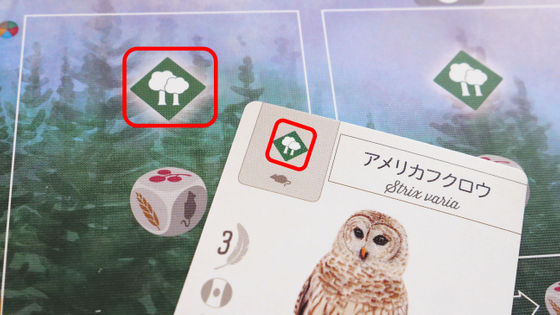
When you put the bird card out into the forest, you pay the food drawn on the card. You need one rodent token to feed a barred owl in your protected area. 'Play Bird Cards' ends the turn when you place a bird card in the field.
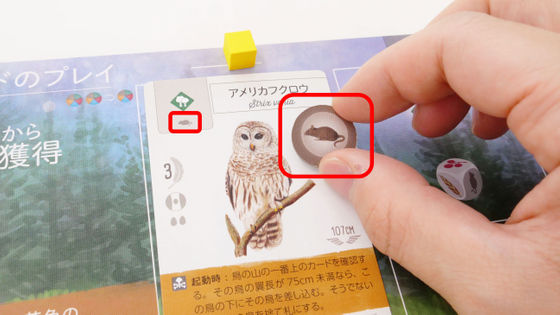
As a result of the barred owl, the scissor-tailed flycatcher, invertebrate and fruit tokens remained. You don't have one invertebrate token to summon the Scissor-tailed Flycatcher to your protected area with 'Play Bird Cards'.
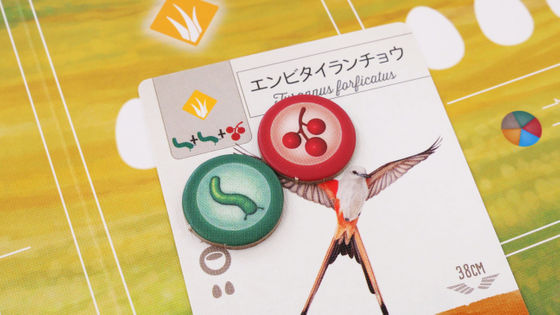
Therefore, perform your turn 'Get Bait'. Food acquisition is feasible in the 'forest'. Since the barred owl is already placed in the leftmost square, you will get food according to the instructions written in the square in the red frame next to it. The square said, 'You can get one bait token indicated by the dice. You can also discard one card and get another bait token indicated by the dice.'
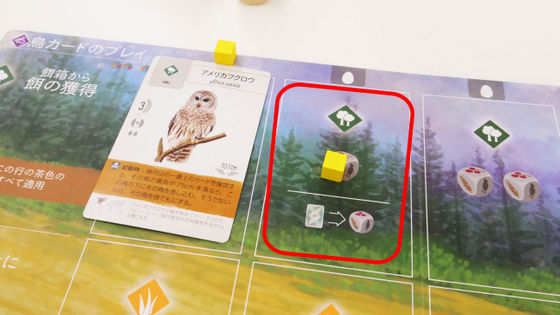
Obtain one die from the bait box type dice tower and get the corresponding bait token.
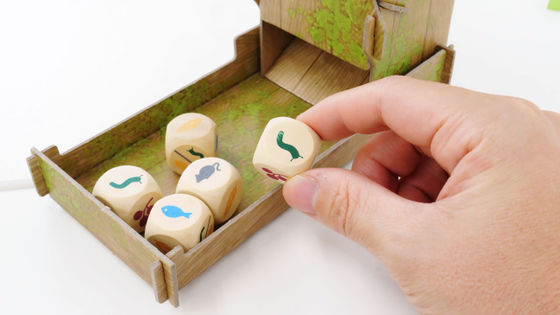
Furthermore, in the actions of 'Getting food', 'Spawning', and 'Bird card', it is possible to activate the 'At startup' abilities of the already arranged bird cards in order from the right. This time, the barred owl 'Check the top card of the bird's mountain. If the bird's wingspan is less than 75 cm, insert the bird under this bird. If not, insert the bird. The ability to 'discard' has been activated.
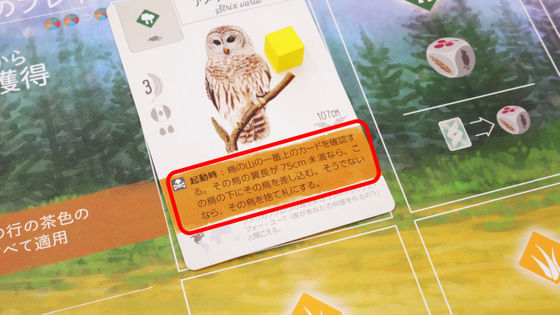
When I checked the top card of the deck according to the instructions, it was a
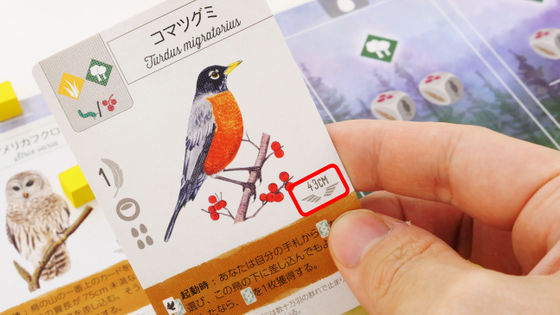
The American robin had a wingspan of 75 cm, so it was 'predated' by the barred owl. The predated American robin is inserted face down under the barred owl. The number of inserted cards is also counted as victory points.
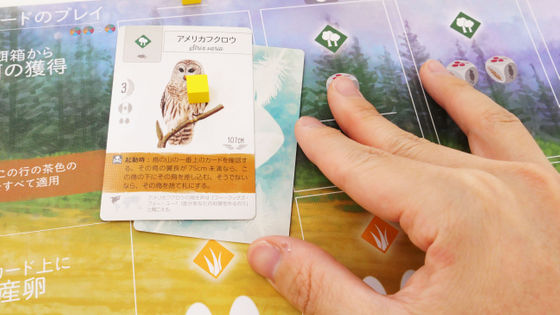
One of the characteristics of the wing span is that when you select an action, all the 'start-up' abilities of the bird cards that are already lined up are activated. If you line up 5 birds with 'start-up' abilities in the forest as shown in the image below, the abilities of all birds will be activated in order from the right. In the case of the image below, if you add up all the abilities, you can get up to 3 seeds & 1 invertebrate & 1 fruit, which is a very powerful combination.

However, if you place a bird card in 'Play Bird Cards' in the second and subsequent rows of forests, grasslands, and swamps, egg tokens will be required as an additional cost.
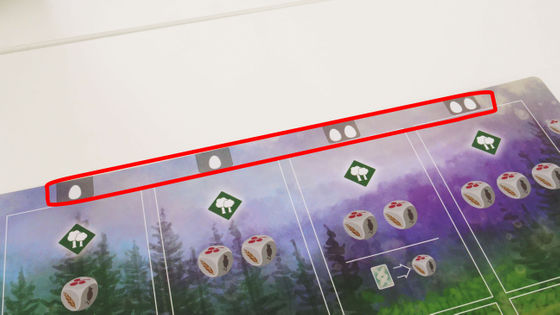
In such a case, execute the 'spawn on bird card' action that allows you to obtain egg tokens.
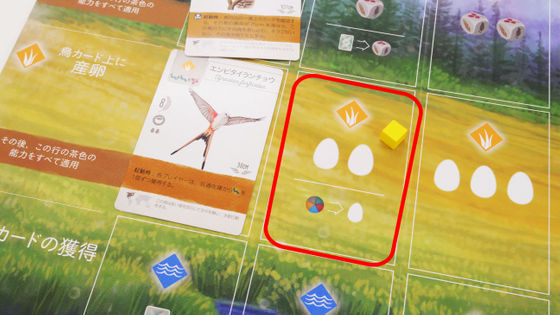
Place the acquired egg tokens on top of the bird cards that are already lined up. Birds already living in the reserve lay their eggs and enrich the reserve. If you pay the egg token as an additional cost, you will consume the egg token placed on any bird.
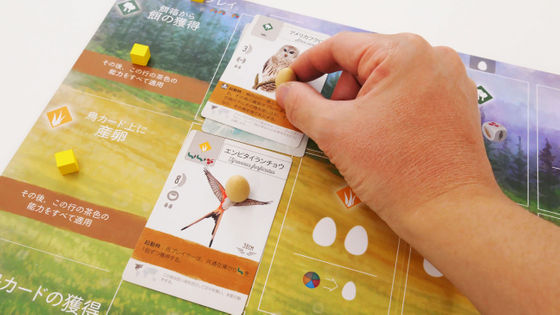
Also, the number of egg tokens that can be placed on each bird card is limited depending on the card. It is said that this number is proportional to 'the number of eggs actually laid by the bird'. Since this maximum number of installations is from 1 to 6, the scissor-tailed flycatcher in the image is a 'bird that does not lay so many eggs'.
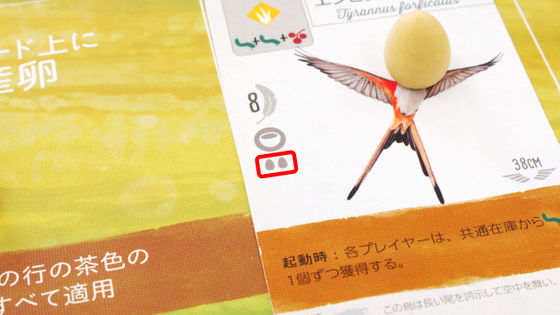
If you want to draw a bird card, such as when you have 0 bird cards at hand, take the 'Get Bird Card' action.
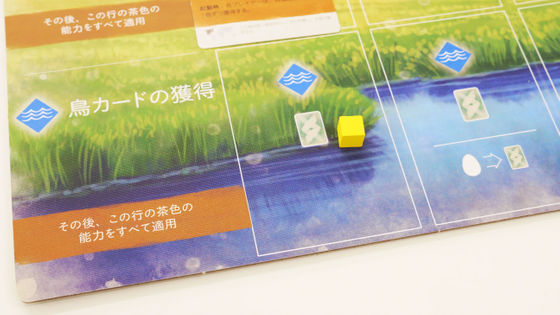
In 'Obtaining Bird Cards', draw the specified number of cards from the three cards arranged in the card tray or the deck and add them to your hand.
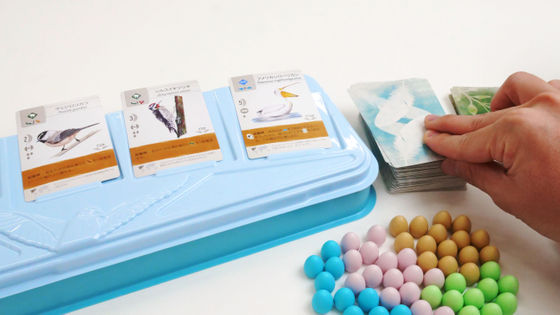
Each player expands his or her protected area by playing 'bird cards', 'acquiring food from the bait box', 'spawning on bird cards', and 'acquiring bird cards'.
After the specified number of turns, the round ends. Earn victory points according to the purpose such as 'the number of bird cards placed in the reserve' set for each round. If there are players with the same rank, the victory points will be divided by the number of players and then distributed.
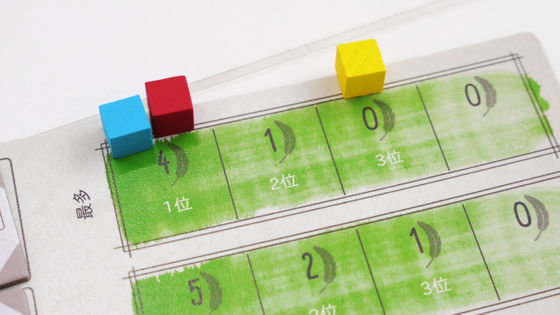
Also, at the end of each round, discard the 3 cards in the card tray and line up 3 new cards from the deck.

When you actually play, the strategies you can take will change considerably depending on the situation such as the bird card you got. Some editorial staff specialize in 'spawning' and try to earn victory points by the number of egg tokens ...

There is also an editorial staff who specializes in 'acquiring food' by arranging bird cards in a row in the forest. When you activate the ability of the bird cards lined up in a row, you will feel a great sense of exhilaration.
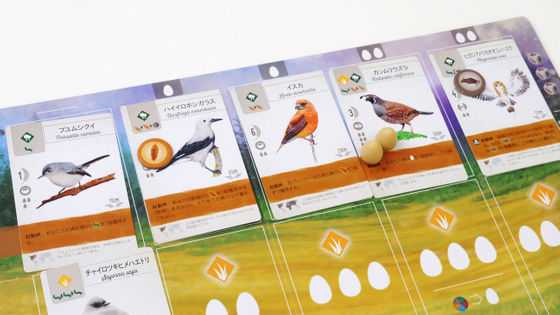
On the other hand, if you line up cards with abilities other than 'at startup' like this, the bird's ability will not be activated even if you perform the corresponding action. 'Play' cards can activate powerful effects when they come into play, but they are weak in the long run.
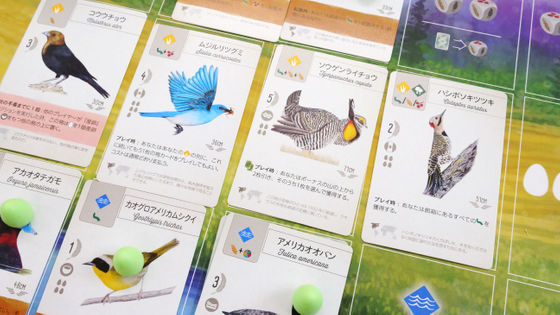
The results of the three editorial staff playing in Gachinko are as follows. Playing multiple times didn't make much of a difference.
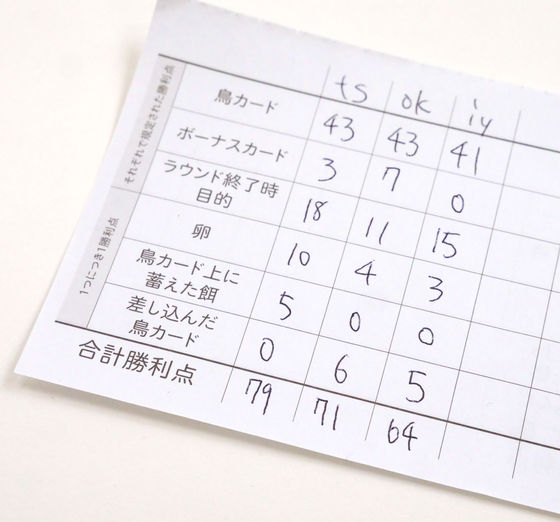
One of the factors that makes playing comfortable is that the wingspan does not have the element of being 'interfered by others'. However, there are cards that 'benefit other players' such as the common
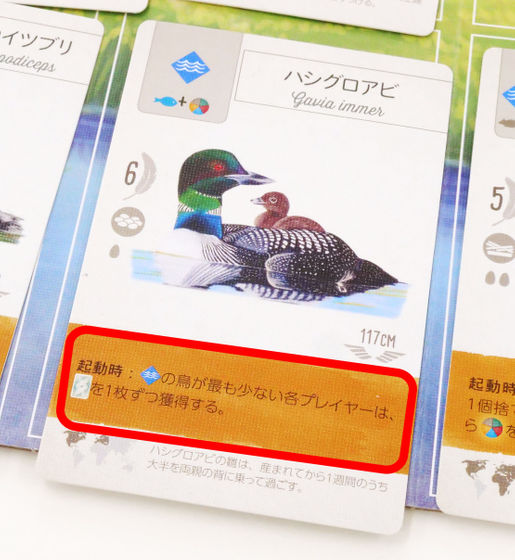
Also, the visual beauty of each component is one of the highlights.
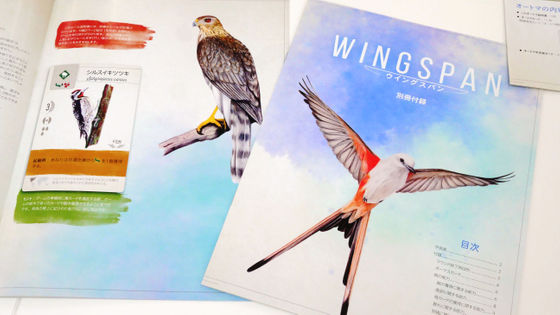
The set abilities of birds are in line with the ecology of real birds ...
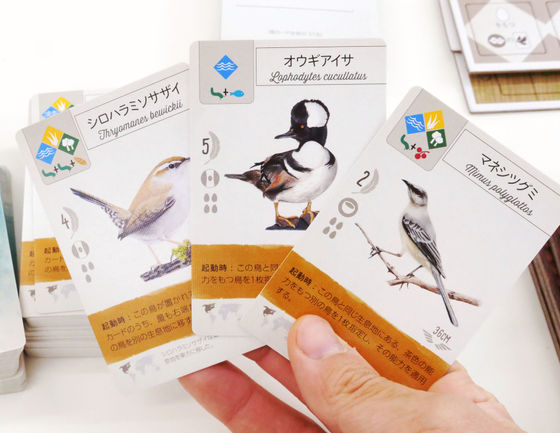
Each card has some bean knowledge written on it, so it's a must-see for bird lovers. Even if you are not familiar with birds, just looking at them will increase your interest in birds.

Since the strategy changes suddenly depending on the card you draw, the development changes every time you play, and it is also attractive that it is highly replayable. On the other hand, I have the impression that it depends on luck to some extent. Also, although the box says that the play time is 40 to 70 minutes, it took about 3 hours when 5 editorial staff members played while checking the effect of the card.
There is also a 'single mode' for people who don't have time to get together and play board games with their friends, so I actually played it.

In one-person mode, follow simplified rules to fight against 'automatic' opponents who score more points by earning bird cards and eggs at a faster pace than humans. There is also a manual for one-person mode only.
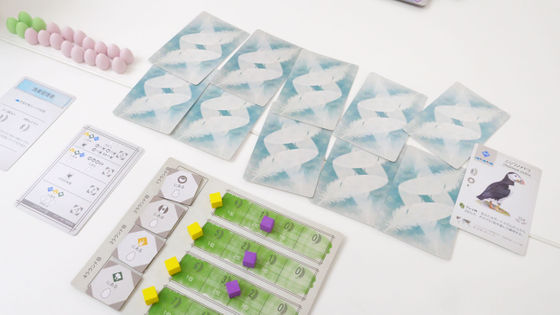
It's basically the same except that the opponent has made it into a manual. The highest difficulty automatics scored fairly quickly, so it took both ability and luck to defeat them.
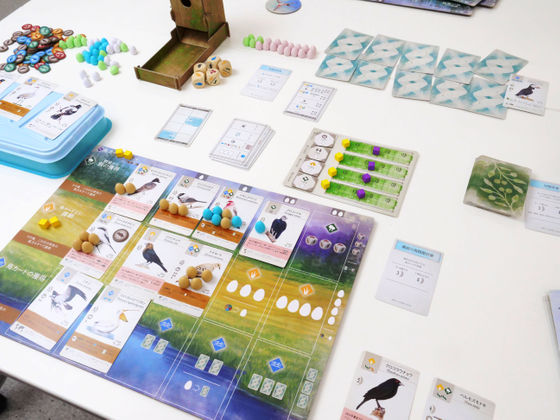
The manufacturer's suggested retail price for spans is 6,500 yen, excluding tax, but probably because of the shortage of goods, it was sold at the marketplace for 10,500 yen including tax at the time of writing the article.

Related Posts:






